As a training officer I am always interested in any form of post incident analysis or after action review my department completes. Whether it is formal or informal it doesn’t matter, the lessons often learned by individuals from these moments need to be shared to the entire department. From my perspective, my organization is not overly staffed and any form of a rapid intervention crew will be late in the incident. Therefore, mayday prevention is vital and proactive steps must be taken. And any lesson learned that is shared might prevent a similar occurrence with more tragic consequences.
As a firefighter, I have been amazed by the advantages of thermal imaging. I never imagined that it would have an impact on the post incident analysis process. Our most recent purchase of Flir K53 thermal imaging cameras allowed us to record incidents. One of the great things about this TIC is that we were able to modify its settings to record from the moment the camera is turned on. Our incidents are now being recorded from start to finish through the eyes of a thermal imager.
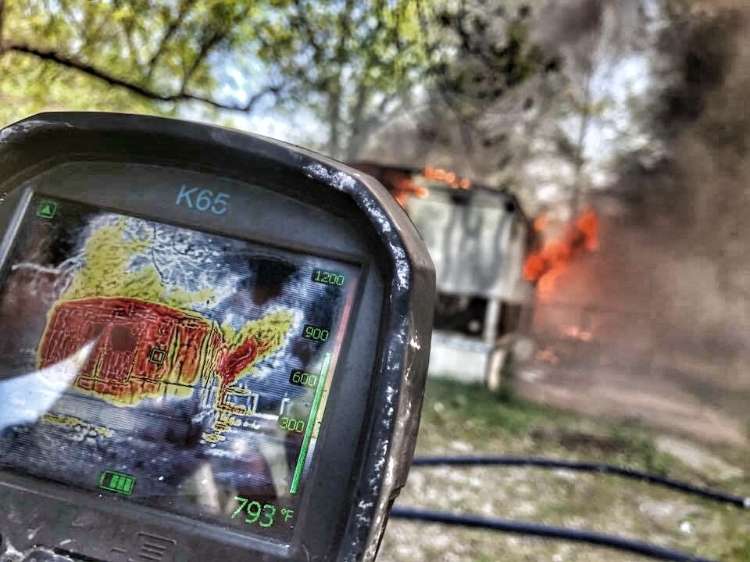
Our recording TIC’s are usually deployed to the officer position and one other to an additional crew leader. This places a TIC on the 360 size up and one on the initial attack line. The other is generally with a search crew or ventilation team. This video can then later be placed side by side any helmet camera video that may also have been captured. The ability to analyze our actions on this level can bring fireground accountability to a whole new level. With these thermal imaging cameras we have been able to see a variety of strengths and weaknesses and work to improve upon them.
Much of this improvement has been centered around thermal imaging camera usage. However, in some cases, we are also able to see how hose lines being maneuvered, water being applied, searches being performed, and other actions taken in zero visibility. Prior to this, these skills would have never been able to be viewed/analyzed before in the actual fire environment. The biggest benefit has been identifying how adequately or inadequately we are utilizing our cameras in actual firefighting operations. The following three points are lessons that our organization has collectively learned from and are sharing with the hope that it will benefit other firefighters and citizens.
Slow Down
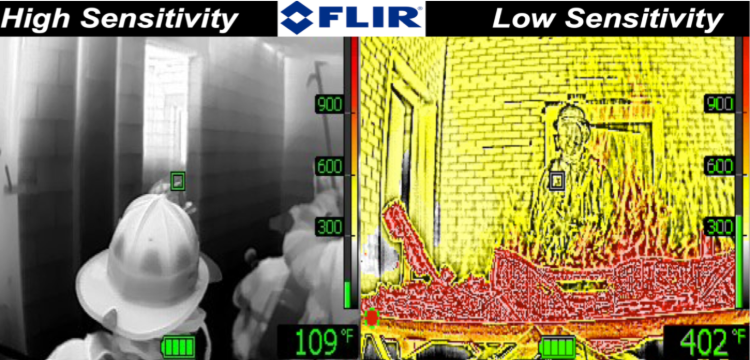
I believe in maintaining a default aggressive mindset as we approach any fire. With that mindset, slowing down doesn’t always come naturally for firefighters. The speed at which we move will often impact our thermal imaging use. The camera allows us to see heated surfaces, target search areas, and possibly victims. The speed at which we move the camera will greatly impact how we see these critical areas.
The speed at which we scan with the camera can impact its effectiveness in three ways. The first is that our scans might outpace the refresh rate (measured in hertz) of our camera. When this is the case, our display will seem frozen on one particular spot in the room. After 1-2 seconds, it will then display the current area the camera is directed towards. The amount of time the cameras is seemingly frozen represents areas of the room we didn’t have a chance to see. This could mean missed victims or heat sources.
The second way our scan speed effects our operation is when the camera doesn’t have time to switch between sensitivity modes. Most generally this is a problem when the camera is in high sensitivity mode and is scanned quickly by superheated surfaces without a chance to switch to low sensitivity. Low sensitivity mode allows us to better assess the superheated environment. When a firefighter scans too fast and encounters high heat, the TIC will shutter or NUC which may cause the screen to briefly freeze. Many firefighters fail to accurately assess the thermal severity of the environment due to failing to allow the TIC to adjust to this higher temperature. Therefore, temperatures exceeding 300F will not be accurately represented. This may cause us to withhold water instead or cooling an area before proceeding or perhaps miss the fire’s location.
The final way that speed impacts the cameras effectiveness is the amount of time we actually take to interpret the display. Thermal imaging cameras have been available to the fire service for over two decades now but availability doesn’t equate to ownership or usage. In 2006 only 55% of the fire departments in the United States owned thermal imaging cameras. Another 25% had plans to acquire one. (Second assessment of the U.S. Fire Service, USFA) In 2015 70% of fire departments surveyed stated they had a thermal imaging camera on every fire scene. (Fourth needs assessment of the U.S. Fire Service, USFA) This data shows that our usage of thermal imaging cameras hasn’t been widespread for very long. Without training on proper use of the camera and repeated usage in either training or fire ground environments we will not interpret the display quickly.
If we are inexperienced at understanding what the TIC is trying to tell us then we must slow down when using it therefore allowing it time to process the infrared data and time for us to interpret it. Inexperienced TIC operators will not identify the camera switching sensitivity modes on the fly. They may also miss heat sources that could lead them to discover the fire is above or below them. Sometimes these cues aren’t spotted rapidly by the inexperienced or untrained eye. This is often due to a lack of patience and understanding.
We See Where We Point
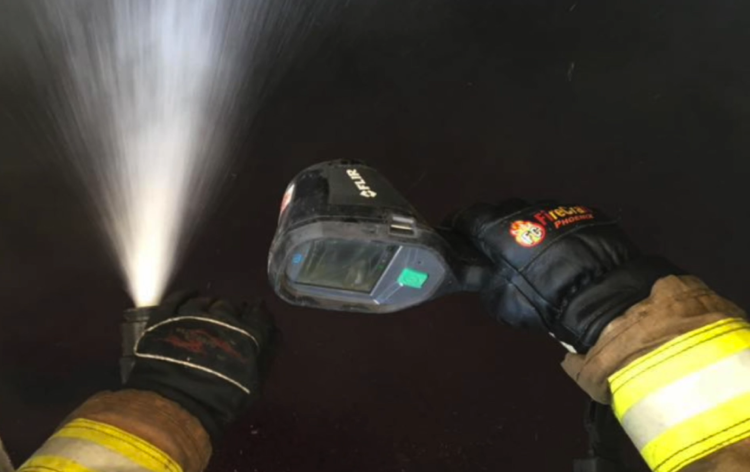
The TIC can only display what we direct it to see. Where we aim the camera controls the information we will have available within its current Field of View. Most firefighters let the perceived situation dictate where they point the TIC. If they are advancing a hose line toward the seat of the fire, the TIC will most likely be pointed at the 48″ level and above. Their attention is then drawn to the area most likely to contain heat while simultaneously missing potential victims. If the crew is searching, they will aim the TIC in the opposite direction. The focus will be on the lower half of the room where they expect to find the victim but, miss the heat accumulating overhead. An officer performing a 360 on a perceived attic fire will instinctively point the camera at the attic area. This approach could completely miss an area of origin below the attic. This is why we advocate flipping the grip or what is known as “the gangsta grip” pictured in the photo above. Most TIC’s have a larger Field of View horizontally than they do vertically. When a firefighter holds the TIC in this position down low, they are able to see the floor and the ceiling in one viewing position by gaining as much as an additional 20 degrees to their Field of View.
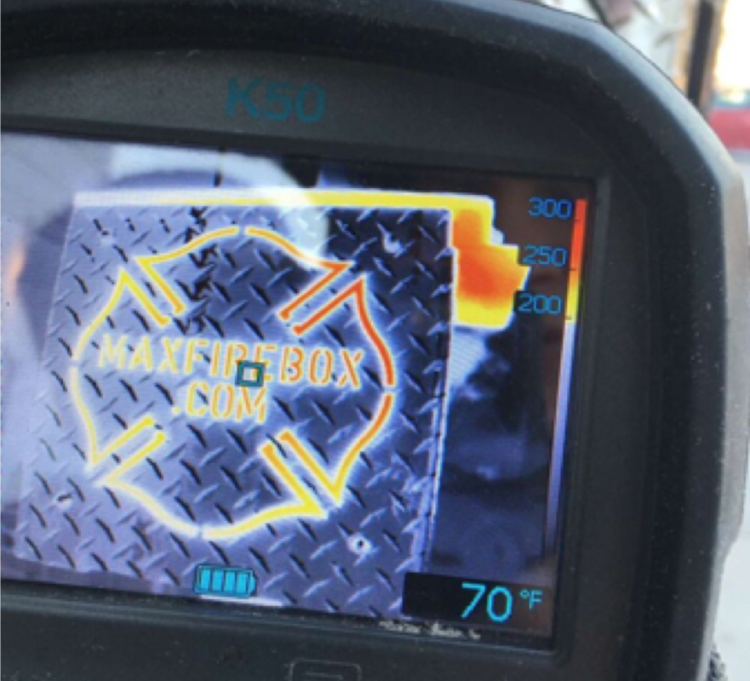
As firefighters we constantly want to advance toward the fire or targeted search area. Our focus is also drawn to what lies ahead. With this forward-leaning approach we often forget to check the area we are leaving. By neglecting this area, we are risking fire developing behind our advance. The second it takes to check behind us, might prevent a mayday or other unfortunate event.
We need to have a systematic process for scanning with the camera. This process should be repeated as we move through the structure. The best practice for scanning with a thermal imaging camera is to start low and finish high while moving the camera from 180 degrees left to right or right to left. Upon viewing the area that lies ahead, we should then move the camera to check the area behind us. This process shouldn’t be reserved for the fire ground but should also be practiced in training. By beginning low, the TIC will typically be in a cooler area and stay in high sensitivity which allows for greater detail or discernment for viewing the environment. If a firefighter places the TIC down low and the TIC engages in Low Sensitivity, they must consider the thermal severity in front of them is very severe if the lower areas are 300 Degrees Fahrenheit or greater.
Get Beyond the Threshold
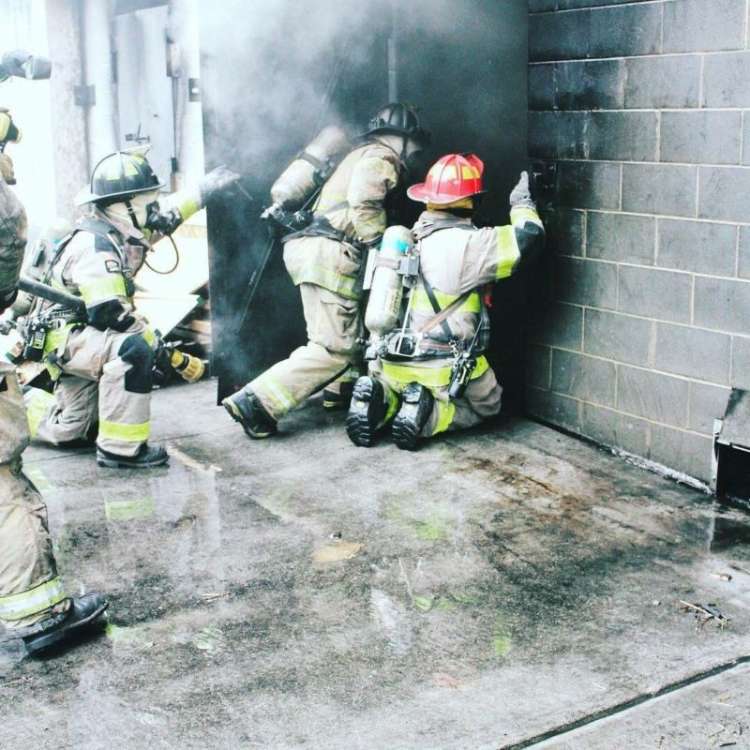
As we advance through a structure, we know certain points are going to need assessed before we move forward. We aren’t able to see around corners, through doorways, or up a set of stairs from a distance. These areas are going to require us to pause and scan ahead. They provide excellent vantage points to identify superheated areas, building layout, and identify target search areas.
When we are at one of these vantage points our positioning will affect the amount of information we are able to gain. If we position ourselves at a distance from a door our view will be impeded by the door frame. Partially opened doors will block our view from a distance as well. If we scan a hallway at a distance we will be limited by the cameras resolution as to how far we can see. The same hinderance applies to stairs, we will be able to better see what lies above the closer we are.
This ability to see the next area we will occupy is imperative. A good habit for utilizing these areas is to move our camera beyond their threshold. When we do this, we close the gap between the camera and the area we are trying to see. The camera’s resolution is being used to the best of its ability. We are also removing obstacles such as door frames, partially opened doors, or other firefighters. Firefighters must also scan wall to wall (the entire width of the room) and not merely shoulder to shoulder as our ergonomics and lack of flexibility often hinder our scanning techniques.
Mechanics are Important
These three simple lessons involve minimal technical knowledge. Just as in moving hose or conducting the primary search, how we move our bodies will affect the ease in which we use the camera. Thermal imaging cameras are limited by the Operators as much as they are limited by technical specifications. All firefighters can become more skilled thermal imaging camera operators by slowing down their movement, aiming the camera with purpose, and placing the camera beyond the threshold. If we combine this skillset with a thorough knowledge of fire behavior and thermal imaging, our cameras will be much more valuable to our operations. We live in a dynamic and fast paced environment and this diagnostic tool allows us to make more effective and efficient decisions that can and has saved lives. However, we have to be educated and properly trained in its implementation, usage, and contraindications in order to reap the most benefit from thermal imaging.
